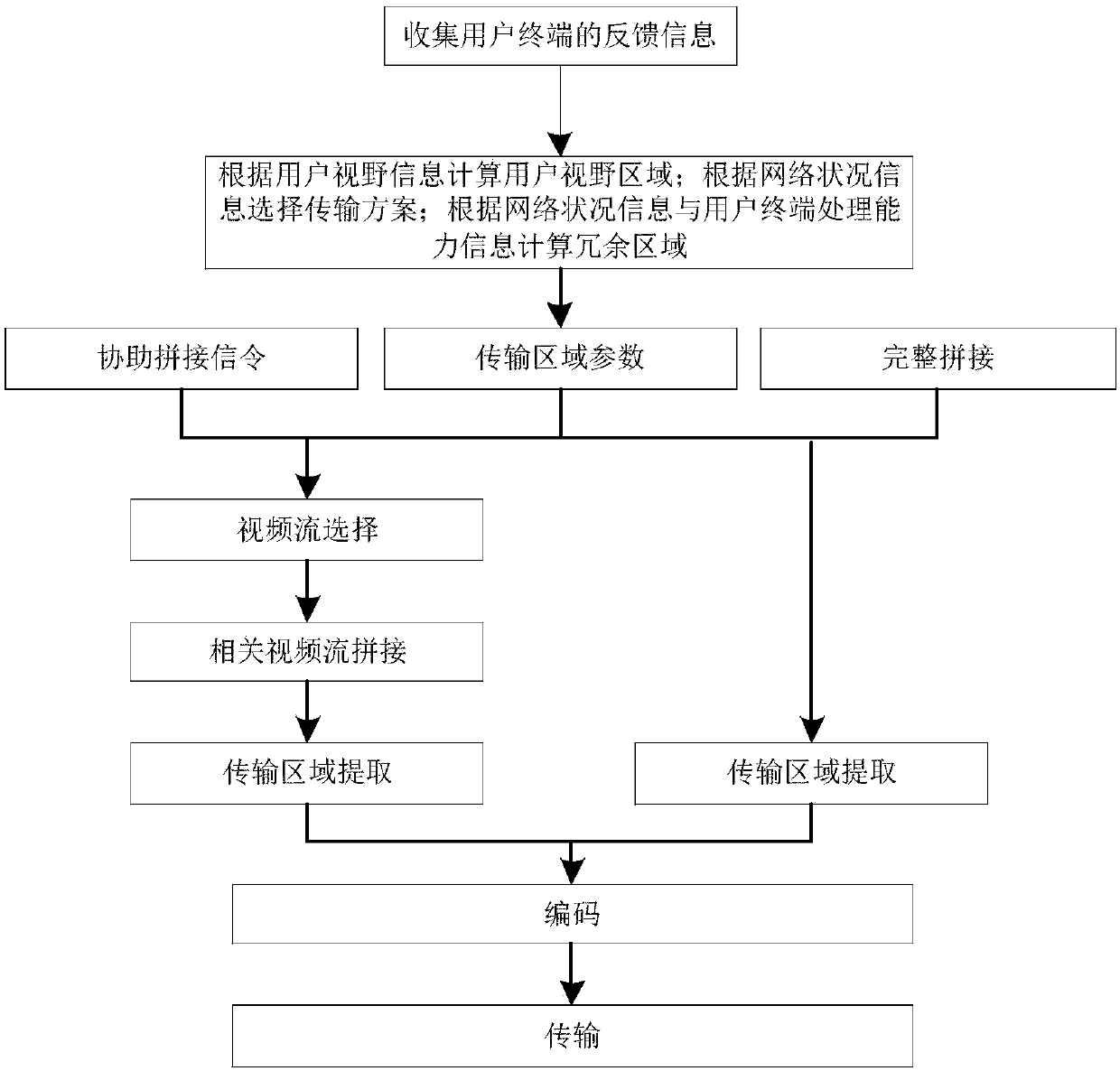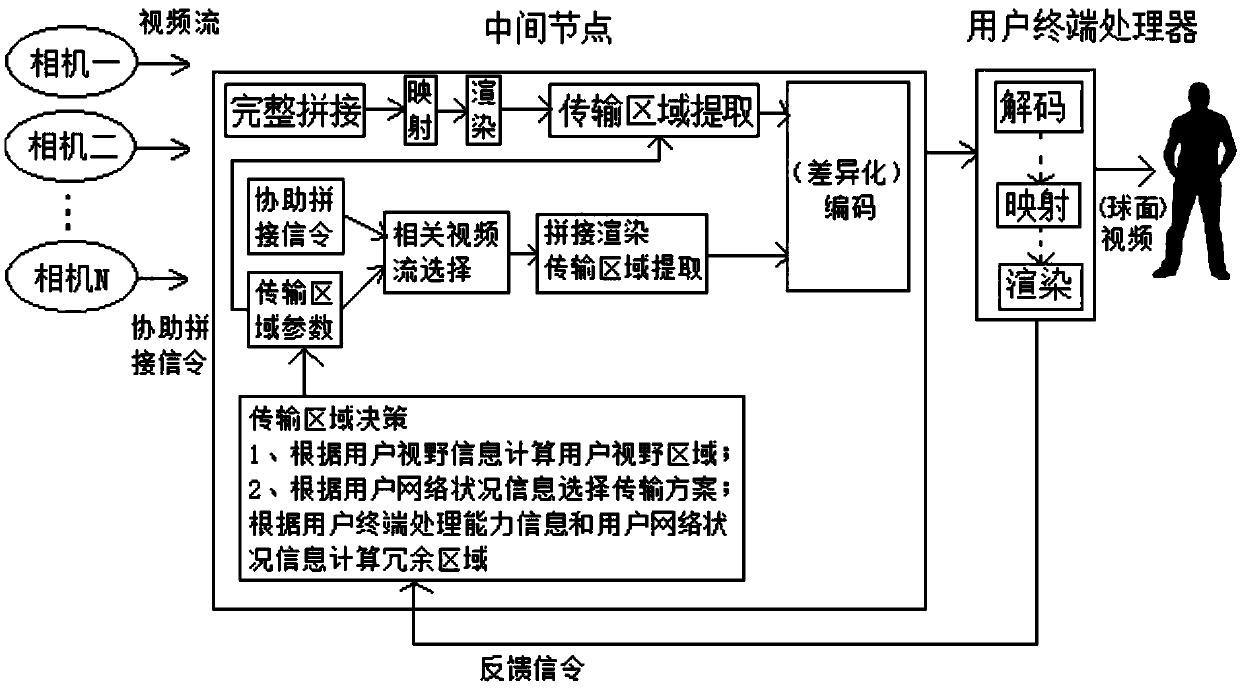Panoramic video transmission method and system based on node calculation
A panoramic video and transmission method technology, which is applied in the field of node computing and video processing, can solve problems such as user experience impact and complexity, achieve the effects of reducing bandwidth overhead, reducing processing delay, and improving consumer experience
- Summary
- Abstract
- Description
- Claims
- Application Information
AI Technical Summary
Problems solved by technology
Method used
Image
Examples
Embodiment Construction
[0042] The present invention will be described in detail below in conjunction with specific embodiments. The following examples will help those skilled in the art to further understand the present invention, but do not limit the present invention in any form. It should be noted that those skilled in the art can make several changes and improvements without departing from the concept of the present invention. These all belong to the protection scope of the present invention.
[0043] Such as figure 2 , image 3 As shown, a kind of panoramic video transmission method based on node computing provided by the present invention includes an intermediate node, and the intermediate node executes:
[0044] Information acquisition step: acquire feedback information from the user terminal in real time, the feedback information at least includes: user field of view information, user network status information and user terminal processing capability information;
[0045] Stitching step...
PUM
 Login to View More
Login to View More Abstract
Description
Claims
Application Information
 Login to View More
Login to View More - R&D
- Intellectual Property
- Life Sciences
- Materials
- Tech Scout
- Unparalleled Data Quality
- Higher Quality Content
- 60% Fewer Hallucinations
Browse by: Latest US Patents, China's latest patents, Technical Efficacy Thesaurus, Application Domain, Technology Topic, Popular Technical Reports.
© 2025 PatSnap. All rights reserved.Legal|Privacy policy|Modern Slavery Act Transparency Statement|Sitemap|About US| Contact US: help@patsnap.com



